What Types of Accommodation and Meals Are Provided During the Trek?
Your trekking package includes carefully selected accommodations and meals to ensure comfort while maintaining an authentic Himalayan experience.
Accommodation Details
In Kathmandu:
- Comfortable tourist-standard hotel
- Private twin-share rooms with attached bathrooms
- Breakfast included (Western/Nepali options available)
During the Trek:
- Traditional mountain teahouses (family-run lodges)
- Basic but clean rooms (typically twin-sharing)
- Common toilet facilities
- Communal dining areas with heating stoves
Note: Teahouses offer rustic accommodation—a cultural experience that many trekkers cherish despite limited amenities.
Meal Arrangements
In Kathmandu: Daily breakfast only
On the Trek:
- Three hearty meals per day (breakfast, lunch, dinner)
- Meals served at your overnight teahouse or en route
- Emphasis on hygienic, energy-rich local foods:
- Nepali staples: Dal bhat (lentil curry with rice), Tibetan bread
- Soups, porridge, pasta, and seasonal vegetables
- Limited meat options (recommended vegetarian diet at altitude)
What to Expect
- No single-room guarantees in teahouses (group sharing may be required)
- Hot showers are available (extra cost)
- Increasingly basic facilities as you gain altitude
- Pack essentials: Sleeping bag liner, quick-dry towel, and toiletries
What Pre-Trek Preparations and Briefings Are Provided?
Amazing Nepal Trek ensures you are fully prepared before beginning your adventure through comprehensive pre-trek orientation:
Pre-Trek Briefing Includes:
- Detailed Information Session
- Complete day-by-day itinerary review
- Elevation profiles and acclimatization schedule
- Safety protocols and emergency procedures
Essential Documentation
Printed information file with:
- Packing checklist
- Altitude sickness prevention guidelines
- Cultural etiquette tips
- Emergency contact numbers
Team Introduction
- Meet your government-licensed trekking guide
- Introduction to support staff (if applicable)
- Q&A session about any personal concerns
Why This Matters
- Builds confidence before hitting the trails
- Ensures alignment between trekkers and guides
- Clarifies all logistical and health considerations
- Establishes communication protocols
Note: Briefings typically occur at your Kathmandu hotel 1 day before trek departure. Bring your questions and any gear needing verification.
What Kind of Trekking Staff Will Support My Trip?
At Amazing Nepal Trek, we provide a complete professional support team to ensure your safety, comfort and an enriching trekking experience:
Guide Services
- Government-registered professional guides
- Fluent English speaking with extensive local knowledge
- Trained in responsible and eco-friendly tourism practices
- Certified in wilderness first aid and altitude sickness management
- Experts in cultural interpretation and route navigation
Assistant Guide Support
- Provided for all groups (size dependent)
- Additional support for managing varied pacing within groups
- Backup leadership in case of route splits or emergencies
Porter Services
- 1 porter provided for every 2 trekkers
- Strict 25kg maximum load (12.5kg per trekker)
- Properly equipped with quality gear and footwear
- Follow ethical treatment and fair wage policies
Staff Welfare Commitments
- All guides and porters fully insured
- Fair wages above industry standards
- Proper accommodation and meals provided during treks
- Regular training programs on safety and service excellence
Our Promise:
You'll be supported by professionals who not only know the mountains intimately, but also care deeply about your experience and safety. Our crew members are the backbone of every successful trek.
Will I Receive Any Recognition After Completing My Trek?
Yes, upon successfully completing your trek with Amazing Nepal Trek, you will receive an official ANTE Adventure Certificate to commemorate your achievement.
Personalized Documentation featuring:
- Your full name
- Trek completion dates
- Maximum altitude reached
- Specific route completed
- Premium Quality printed certificate suitable for framing
- Official Validation with ANTE company seal and guide signature
Why This Matters:
- Serves as a lasting memento of your Himalayan journey
- Validates your physical accomplishment
- Many trekkers display theirs proudly at home or office
- Recognizes your perseverance through challenging terrain
Note: Certificates are typically presented during your farewell dinner in Kathmandu. If departing early, we can arrange digital delivery.
Is the Everest Base Camp Trek suitable for families and children?
Yes, the Everest Base Camp Trek is a family-friendly adventure and can be suitable for children with the right planning. Remarkably, a 4-year-old child successfully completed the trek with Amazing Nepal Trek on January 1, 2024, demonstrating that even young trekkers can reach base camp with proper support, pacing, and acclimatization. Kids often adapt well when the trek is made fun, engaging, and tailored to their needs.
While the standard 16-day itinerary might be too demanding for young children, it can be customized with shorter walking days, more rest stops, and extra acclimatization time to ensure safety and comfort. Trekking with kids requires patience and flexibility, but with experienced guides and the right gear, it can be a rewarding experience for the whole family. Contact us for a customized family-friendly itinerary designed specifically for trekking with children.
What Are the Group Size Options for the Trek?
Amazing Nepal Trek offers flexible group arrangements to ensure optimal safety, personalized attention, and an enriching trekking experience:
Standard Group Size
- Small groups of 2 to 10 participants
- Ideal balance of social interaction and individual attention
- Ensures proper guide-to-trekker supervision
Special Arrangements Available
- Solo Trekkers
- Custom private itineraries upon request
- Adjusted pricing and logistics
- Dedicated guide support
- Large Groups (10+ people)
Customized planning for:
- Additional guide/porter support
- Modified teahouse accommodations
- Flexible pacing options
- Early notification required (minimum 15 days advance)
Why Group Size Matters
- Maintains 1:4 staff-to-trekker ratio for safety
- Allows proper resource allocation (accommodations, permits)
- Ensures quality experience without overcrowding
- Permits itinerary customization based on group dynamics
Note: We recommend booking early for solo treks or large groups to secure the best arrangements. Our team will work closely with you to adapt plans to your group's specific needs and abilities.
How Does Amazing Nepal Trek Manage the Challenges of Everest Region Trekking?
Trekking in the Everest region presents both physical and technical challenges that require careful planning and expert support. At Amazing Nepal Trek, we have developed specialized strategies to ensure your safety and success while maintaining the adventure's authenticity.
Technical & Physical Challenge Management
- Scientifically Designed Itinerary
- Natural acclimatization schedule with strategic rest days
- Precise daily elevation gains (300-500m above 3,500m)
- Optimized walking distances (5-7 hours/day)
Critical Safety Protocols
- Pulse oximeter checks twice daily
- Emergency oxygen systems available (with extra charge)
- Immediate descent plans for altitude sickness cases
- Expert Crew Support
- High-Altitude Specialists
Guides trained in:
- Glacier navigation
- Wilderness First Responder certified staff
- Satellite communication for emergencies
- Terrain-Specific Preparations
Weather Adaptations:
- Flexible scheduling for wind/storm patterns
- Contingency days built into all itineraries
Our Priority:
While we maintain the trek's challenging nature essential for an authentic experience, our 12-point safety system ensures you're never beyond help. Over 95% of our trekkers complete their journeys successfully through this balanced approach.
Why is Travel Insurance Mandatory for Everest Region Trekking?
At Amazing Nepal Trek, we require all trekkers to obtain comprehensive travel insurance before embarking on any high-altitude adventure. The remote and challenging nature of Himalayan trekking makes proper coverage essential for your safety and financial protection.
Key Insurance Requirements
Your policy must specifically include:
- Emergency helicopter evacuation (minimum $100,000 coverage)
- High-altitude trekking coverage up to 6,000m
- Medical expenses (minimum $50,000 including hospitalization)
- Trip cancellation/interruption protection
- Lost/stolen baggage coverage
Critical Conditions:
Helicopter Rescue
- Average evacuation cost: 3,000−7,000 without insurance
- Must cover remote mountain locations (not just city hospitals)
Altitude Coverage
- Standard policies often exclude elevations above 4,000m
- Verify "mountaineering" or "trekking" is specifically mentioned
Documentation
- Carry both digital and physical copies of your policy
- Share insurance details with your guide during briefing
Our Recommendations
- Purchase insurance within 16 days of booking for cancellation benefits
- Select providers with Nepal experience (e.g., World Nomads, IMG)
Ensure coverage includes:
- Pre-existing medical conditions (if applicable)
- Adventure sports activities
- Political evacuation
Important: We cannot permit trekking without verified insurance coverage. Our staff will check your documents during the Kathmandu briefing.
Are Permit Fees Included in the Trekking Package Cost?
Yes, Amazing Nepal Trek includes all mandatory government fees and permits in your package price, ensuring full compliance with local regulations.
Permits & Fees Covered:
- Sagarmatha National Park Entry Permit
- TIMS Card (Trekkers’ Information Management System)
- Khumbu Pasang Lhamu Rural Municipality Permit
- World Heritage Site Conservation Fees
- Restricted Area Permits (where applicable)
Why This Matters:
- No hidden costs – All official fees are pre-paid
- Hassle-free experience – We handle all paperwork
- Supports local communities – Fees contribute to trail maintenance and sustainable tourism
Note: Personal expenses (snacks, drinks, tips) are not included. Your package covers only mandatory trekking/climbing permits required by Nepalese authorities.
What About Lukla Flight While Going on 16 Days EBC Trek?
Flights to Lukla primarily operate using Twin Otter and Dornier aircraft, which are generally reliable but subject to cancellations due to mountain weather conditions or technical issues. During peak trekking seasons (March-May and mid-September-November), flights may be rerouted through Ramechhap Airport (Manthali), located 135km from Kathmandu (4-5 hours' drive), to manage air traffic congestion. Travelers should account for strict baggage allowances (10-15kg) and potential delays when planning their itinerary. Morning flights are recommended as they are less prone to weather disruptions.
In case of cancellations, Amazing Nepal Trek can arrange helicopter charters (which require only 1,500m visibility compared to 5,000m for fixed-wing aircraft) to ensure timely connections for international flights. Helicopter costs range from 500 to 3,500 depending on group size, payable in USD cash, traveler's checks, or credit cards (Visa/Mastercard), with receipts provided for insurance claims. We strongly advise arriving in Kathmandu at least one day early for gear preparation and including buffer days post-trek to accommodate possible flight delays. While we strive to maintain schedules, unpredictable mountain conditions may require itinerary adjustments, which our experienced team will handle while prioritizing safety and comfort throughout your journey.
Note: All information remains subject to change based on weather, trail conditions, or aviation regulations, and our guides will provide real-time updates and alternative arrangements as needed during your trek.
What is the Total Trekking Distance and Elevation Profile for the 16-Day Everest Base Camp Trek?
The 16-Day Everest Base Camp Trek covers approximately 130 kilometers (80 miles) of trekking through the breathtaking Himalayan landscape. The route is carefully designed to ensure proper acclimatization while offering a rewarding challenge.
Key Elevation Points:
- Kathmandu (Start): 1,400m (4,593ft)
- Lukla (Flight Landing): 2,860m (9,383ft)
- Namche Bazaar (Acclimatization Stop): 3,440m (11,286ft)
- Tengboche (Monastery Visit): 3,860m (12,664ft)
- Dingboche (Second Acclimatization): 4,410m (14,469ft)
- Lobuche (High Camp): 4,910m (16,109ft)
- Gorak Shep (Last Stop Before EBC): 5,164m (16,942ft)
- Everest Base Camp (Destination): 5,364m (17,598ft)
- Kala Patthar (Highest Viewpoint): 5,545m (18,192ft)
Daily Trekking Details:
Average Daily Walking Time: 5–7 hours
Acclimatization Days: Included in Namche & Dingboche
Highest Sleeping Altitude: Gorak Shep (5,164m)
Gradual Ascent: Follows safe altitude gain guidelines
Why This Matters:
Our itinerary balances steady progress with essential rest days to maximize safety and summit success. The trek’s difficulty comes from altitude rather than technical terrain, making it achievable for fit hikers with proper preparation.
Is Safe Drinking Water Available During the Trek? What Are the Toilet and Shower Facilities Like?
Drinking Water Safety
Tap or natural water sources in the Everest region are unsafe to drink untreated. We recommend:
- Bottled water (cost increases with altitude: NPR 100–500)
- Purification tablets (provided by us)
- UV sterilizers (bring extra batteries)
- Boiled water at teahouses (NPR 100–400/liter)
Hot beverages (tea/coffee – safe, as water is boiled)
Hydration Tip: Drink 3–4 liters daily to prevent altitude sickness.
Toilet Facilities
- Kathmandu Hotel: Western flush toilets with toilet paper
- Lower Elevations (Lukla–Namche): Mix of Western & squat toilets (usually flushable)
- Higher Elevations (Dingboche+): Basic squat toilets (non-flush)
Note: Carry toilet paper & hand sanitizer—soap is rarely provided.
Shower Facilities
- Kathmandu Hotel: Reliable hot showers
- Lukla, Phakding and Namchhe: Free hot showers
- Beyond Namchhe Bazaar: Paid Hot Shower (NPR 500–700)
Pro Tip: Pack wet wipes, quick-dry towels, and biodegradable soap for higher altitudes.
Our Advice:
- Use water purification for environmental sustainability
- Budget NPR 500–1,000/day for bottled/boiled water
- Ask your guide for the best-maintained facilities en route
How Should I Prepare Physically and Logistically for the Trek?
Physical Preparation (Begin 2–3 Months Before)
- Cardiovascular Training: Focus on hiking, walking, swimming, or cycling to build endurance.
- Strength Training: Target legs, core, and back muscles for steep trails and long days.
- Practice Hikes: Train with a loaded daypack (5–7kg) on varied terrain.
- Build Stamina: Gradually increase workouts to 4–5 hours once weekly.
- Footwear: Break in hiking boots thoroughly to prevent blisters.
Altitude Preparation
- Acclimatization Hikes: If possible, trek to moderate altitudes (3,000m+) beforehand.
- Medical Consultation: Consult your doctor about preventive medication options for altitude sickness.
- Hydration: Practice drinking 3–4 liters of water daily before the trek.
- Breathing Techniques: Learn rhythmic breathing for high-elevation exertion.
Gear Preparation
- Clothing: Follow our layering system (moisture-wicking base to insulated outer layers).
- Sleeping Bag: Rated for -10°C (14°F) minimum.
- Footwear: Test boots on multi-day hikes before departure.
- Packing List: Review our detailed checklist (provided upon booking).
Administrative Tasks
- Nepal Visa: Obtain on arrival or from embassies.
- Travel Insurance: Must cover high-altitude trekking + emergency evacuation.
- Vaccinations: Consult a travel clinic for recommended immunizations.
Documentation: Bring:
- Passport copies + extra photos (for permits)
- Insurance policy copies (physical + digital)
Support from Us:
- You’ll receive a pre-departure package with tailored guidelines.
- Our team is available for gear recommendations and itinerary questions.
Is the Everest Base Camp Trek Suitable for Beginners?
The Everest Base Camp (EBC) Trek is a challenging yet achievable high-altitude adventure, covering 130km (80 miles) over 10–12 days, with 5–6 hours of daily walking. While the altitude (up to 5,555m / 18,192ft) and unpaved trails can make breathing and stamina difficult, proper preparation and expert support make it possible for determined beginners to succeed.
Key Challenges & How We Help You Overcome Them
Altitude Sickness (AMS)
- Why It’s Tough: Low oxygen levels cause fatigue, headaches, and nausea.
Our Solution:
- Built-in acclimatization days (Namche & Dingboche)
- Pulse oximeter checks to monitor oxygen levels
- Emergency oxygen & evacuation plans
Physical Demand
Why It’s Tough: Long uphill/downhill hikes with a backpack.
Our Solution:
- Porters (1 per 2 trekkers) to carry heavy gear
- Gradual pacing with rest breaks
- Pre-trek fitness guidance
Weather & Trail Conditions
Why It’s Tough: Cold nights, rocky paths, and sudden weather changes.
Our Solution:
- Proper gear recommendations (sleeping bag, layers, trekking poles)
- Experienced guides to navigate safely
Who Can Complete This Trek?
- Beginners with 3+ months of cardio/strength training
- Non-technical hikers (no climbing skills needed)
- Age 12–65+ (with medical clearance if needed)
Success Tips:
- Train beforehand (hiking with a weighted pack)
- Pack light (stick to our recommended gear list)
- Stay hydrated & eat well (carb-heavy meals for energy)
- Listen to your guide (they’ll adjust pacing if needed)
What Are the Weather Conditions During the Everest Base Camp Trek?
Weather in the Everest region is highly unpredictable, with conditions changing rapidly throughout the year. Proper preparation for temperature variations, wind, and precipitation is essential for a safe and successful trek. Below is a detailed seasonal breakdown:
Best Season: Post-Monsoon (September–November)
- Weather: Clear skies, minimal rainfall
- Daytime Temperatures: 12–20°C (53–68°F)
- Nighttime Temperatures: -5–5°C (23–41°F)
- Trail Conditions: Dry and stable
- Visibility: Excellent for mountain views
- Crowds: Peak season—early booking recommended
Second Best Season:Pre-Monsoon (March–May)
- Weather: Warm days, occasional showers
- Daytime Temperatures: 15–20°C (59–68°F)
- Nighttime Temperatures: 5–10°C (41–50°F)
- Landscape: Blooming rhododendrons, green valleys
- Trail Conditions: Mostly dry
- Crowds: Moderate
Winter Season (December–February)
- Weather: Extreme cold, snow-covered trails
- Daytime Temperatures: -10 to -15°C (14–5°F)
- Nighttime Temperatures: -20 to -25°C (-4 to -13°F)
- Challenges: Icy paths, potential route closures
- Advantages: Fewer trekkers, pristine snowy views
Monsoon Season (June–August)
- Weather: Heavy rainfall, high humidity
- Daytime Temperatures: 20–25°C (68–77°F)
- Nighttime Temperatures: 10–15°C (50–59°F)
- Challenges: Slippery trails, limited visibility
- Advantages: Lush landscapes, minimal crowds
Essential Weather Preparedness Tips
- Pack layered clothing for sudden temperature changes
- Carry waterproof gear, even in dry seasons
- Use high-SPF sun protection due to strong UV rays
- Maintain a flexible itinerary for possible weather delays
Our Expertise Ensures Your Safety
- Decades of experience navigating Everest’s weather patterns
- Contingency plans for storms, avalanches, and route changes
- Real-time weather updates from our on-ground team
Is WiFi Available at Everest Base Camp?
WiFi connectivity has improved in the Everest region in recent years, though service remains limited due to the remote high-altitude environment.
Availability & Coverage
- Teahouses & Lodges: Many offer paid WiFi (Based on data usages)
- Coverage Areas: Strongest in villages (Lukla, Namche, Dingboche)
- Everest Base Camp: Limited WiFi at Gorak Shep (last stop before EBC)
Internet Speed & Reliability
Speed: Basic browsing/messaging only (0.5–2 Mbps)
Limitations:
- Bandwidth shared among many users
- Unreliable during bad weather
- No streaming or large file uploads
Recommended Communication Options
- Local SIM Cards (Ncell/NTC) – better signal in some areas
- Offline Maps/Messaging Apps (download before trek)
- Satellite Devices (for emergency use)
Note: WiFi is sufficient for brief emails/texts but not for heavy usage. Prepare for frequent disconnections.
Is Mobile Network Coverage Available at Everest Base Camp?
Yes, mobile network coverage is available in parts of the Everest region, though service quality varies significantly with altitude and location.
Network Providers & Coverage
NTC (Nepal Telecom):
- Most reliable coverage up to Everest Base Camp (5,364m)
- Strongest signal in villages (Lukla, Namche, Dingboche)
- Limited to no service above Gorak Shep
Ncell:
- Works well up to Namche Bazaar (3,440m)
- Unreliable beyond Tengboche (3,860m)
Signal Strength & Limitations
Best for Calls/SMS:
- Lower elevations (Lukla to Namche)
- Early mornings (less network congestion)
Weak/No Signal Areas:
- High-altitude zones (Lobuche, Gorak Shep, EBC)
- Valleys and steep trail sections
Data Services (3G/4G)
Speeds: Basic browsing (0.5–2 Mbps)
Functional Uses:
- WhatsApp/text messaging
- Email (without attachments)
- Social media (slow loading)
Pre-Trek Preparation Tips
SIM Card Purchase:
- Buy in Kathmandu (passport copy required)
- NTC is preferred for higher elevations
Top-Up Options:
- Local shops in Lukla/Namche
- Carry extra balance for remote areas
Alternative Communication:
- Rent a satellite phone for emergencies
- Use offline maps/messaging apps
What is the condition of electricity while trekking to Everest Base Camp?
Electricity is generally available throughout most of the Everest Base Camp trek, especially in lower-altitude villages like Lukla, Phakding, and Namche Bazaar, where power is supplied by local hydropower. In these areas, charging your phone or camera is usually straightforward and sometimes even free. However, as you gain altitude—passing through villages like Tengboche, Dingboche, Lobuche, and Gorak Shep—electricity becomes more limited, often supplied by solar panels or small generators. Power may only be available for a few hours per day, and charging electronic devices usually comes at a cost that increases with altitude (typically $2–$10 per device, depending on size and location).
Electricity in the higher regions is less reliable and may be affected by weather, especially if solar panels are the primary source. It's a good idea to carry a high-capacity power bank and charge it fully whenever you have a stable source of electricity. Using your devices in battery-saving mode, bringing extra batteries for cameras, and carrying a universal adapter (Nepal uses Type C, D, and M plugs) will help you stay powered throughout the trek. While it's possible to stay connected, being prepared for limited and paid access to electricity in remote areas is essential.
What is the climate like at Everest Base Camp throughout the year?
The climate at Everest Base Camp varies significantly across the four trekking seasons, each offering a distinct experience. During the monsoon season (June to August), the region experiences heavy rainfall, high humidity, and cloudy skies. Daytime temperatures can reach 20–25°C, while nights are cooler at 10–15°C. The trails are often wet, muddy, and slippery, but the landscape is lush and green. However, due to challenging trekking conditions and limited mountain views, this season is less popular among trekkers.
The post-monsoon season (September to November) is considered the best time to trek, offering clear skies, dry weather, and comfortable temperatures ranging from 12–20°C during the day to -5–5°C at night. Trails are at their busiest during this time. The winter season (December to February) brings snow, cold weather, and fewer trekkers. With daytime temperatures between -10 to 15°C and nights dropping to -20 to -25°C, it can be a demanding time to trek, but the clear skies and quiet trails offer a stunning and serene experience. The pre-monsoon season (March to May) is another great time to visit, with warm days (15–20°C), cool nights (5–10°C), and blooming rhododendrons adding color to the trails. Each season requires different levels of preparation, especially in terms of clothing and gear, but all promise a memorable adventure in the Himalayas.

 54 Reviews on Google
|
54 Reviews on Google
|  30 Reviews on Facebook
30 Reviews on Facebook
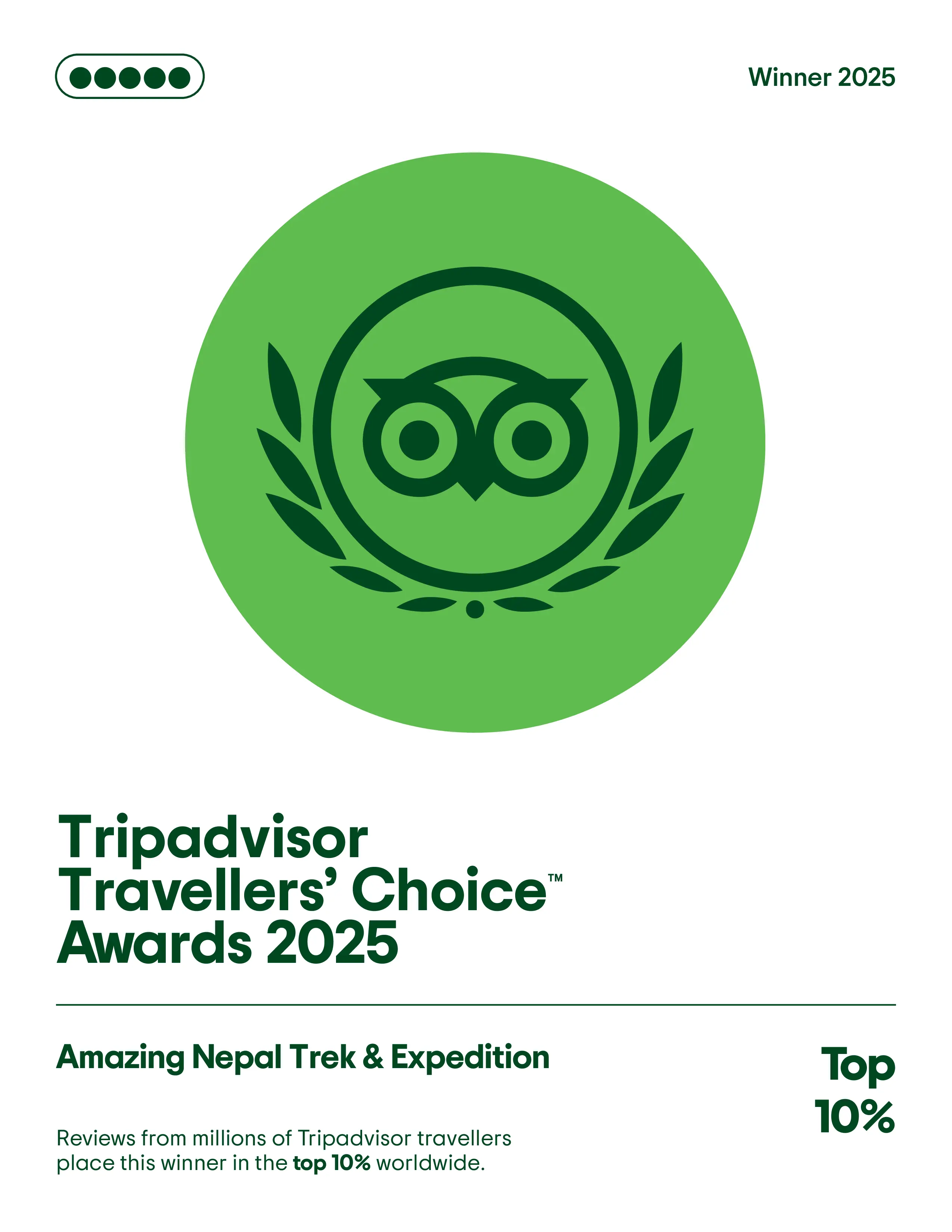
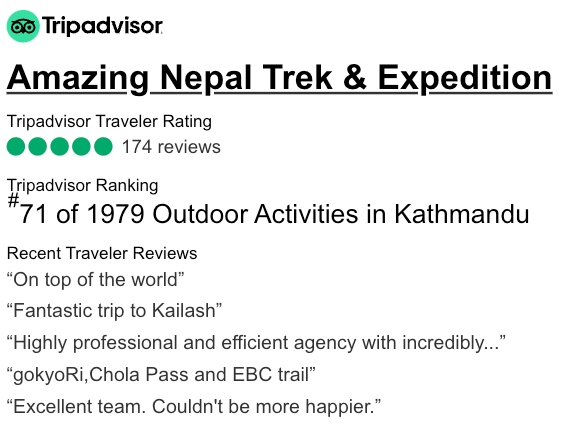
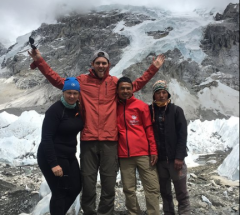
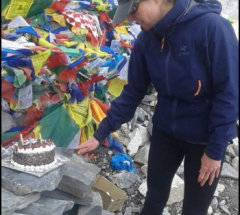
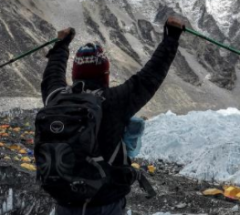
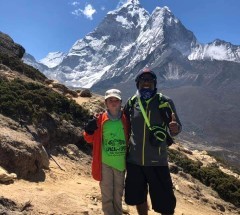
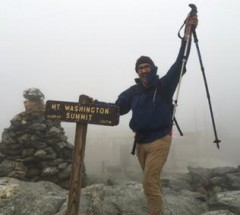
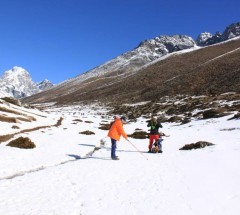





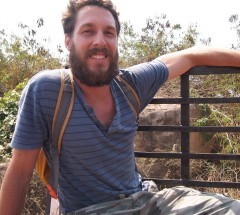
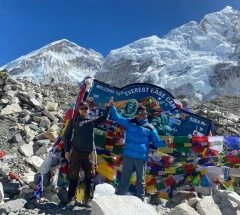
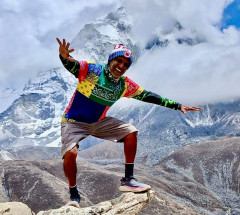
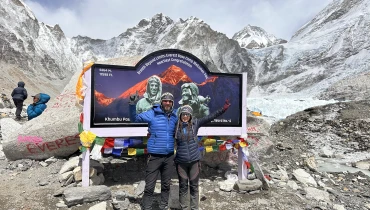
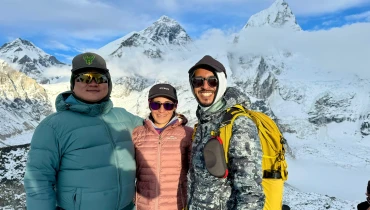

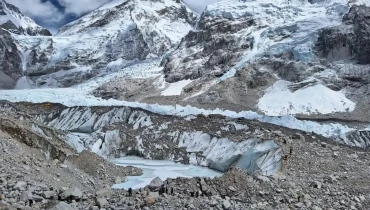
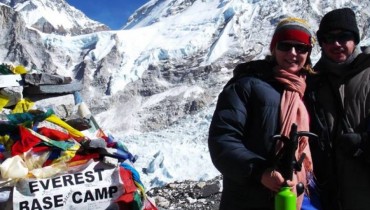
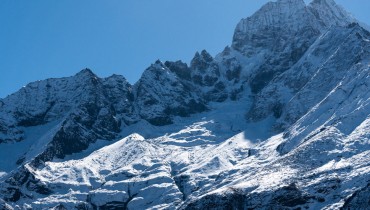
 WhatsApp Us
WhatsApp Us




